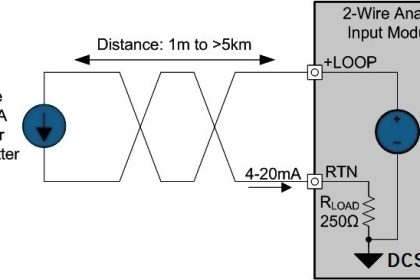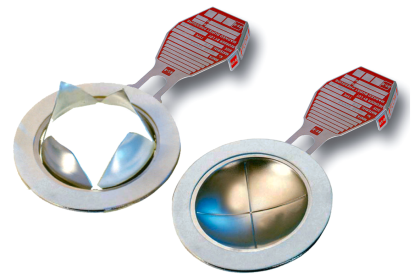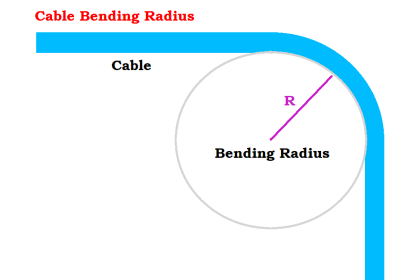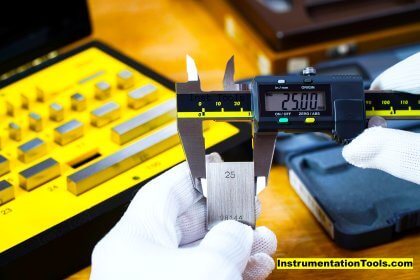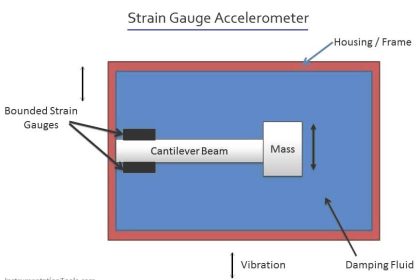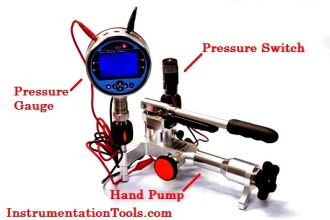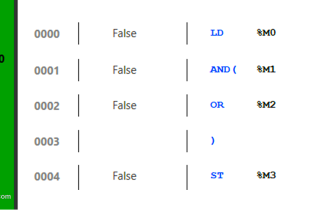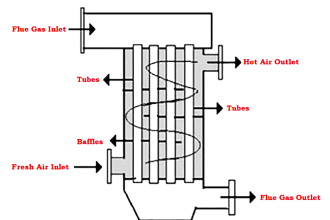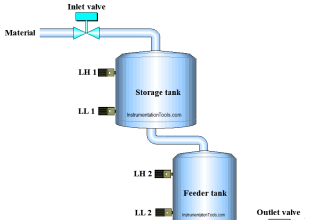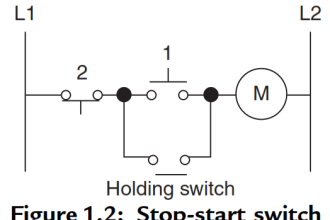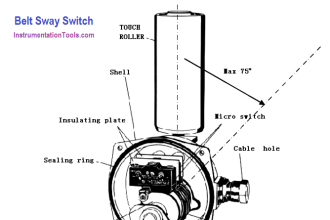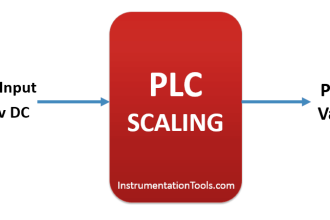In this post, we will learn the various types of meters used in troubleshooting electrical equipment.
Electrical equipment requires various types of meters for troubleshooting the issues found in it. There is a wide range of meters used.
Clamp-On Ammeters
As the name suggests, Clamp-On Ammeters is a device that is used to measure current. It has a jaw-type holder which can be opened or closed like a hand jaw, to place around the conductor.
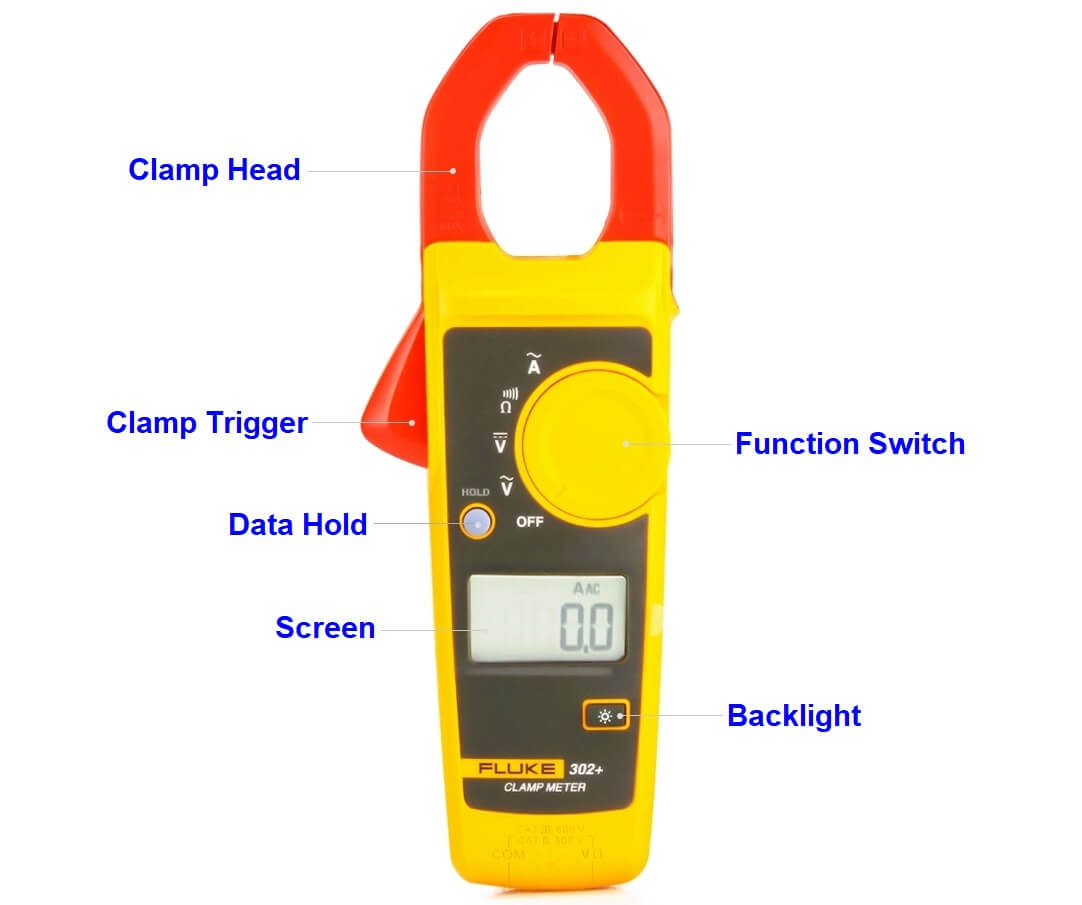
The jaw consists of an internal current transformer. It measures current in the circuit by measuring the magnetic field’s strength around the conductor.
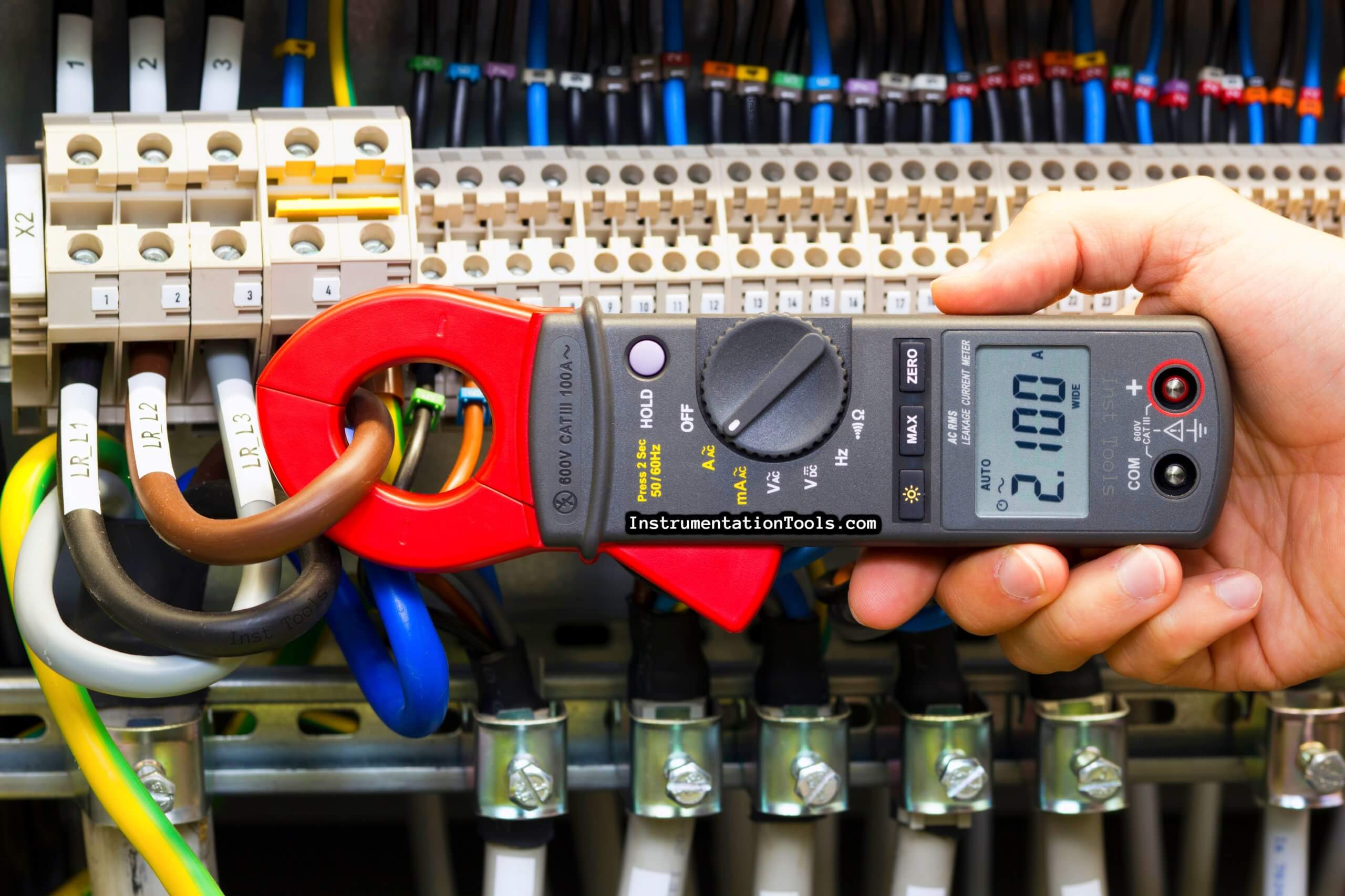
Multimeter
A multimeter is used to measure voltage, current, and resistance. It is used in every electrical and electronic troubleshooting. Multimeter has test leads which are flexible, insulated wires (red for positive, black for negative) that plug into the multimeter.
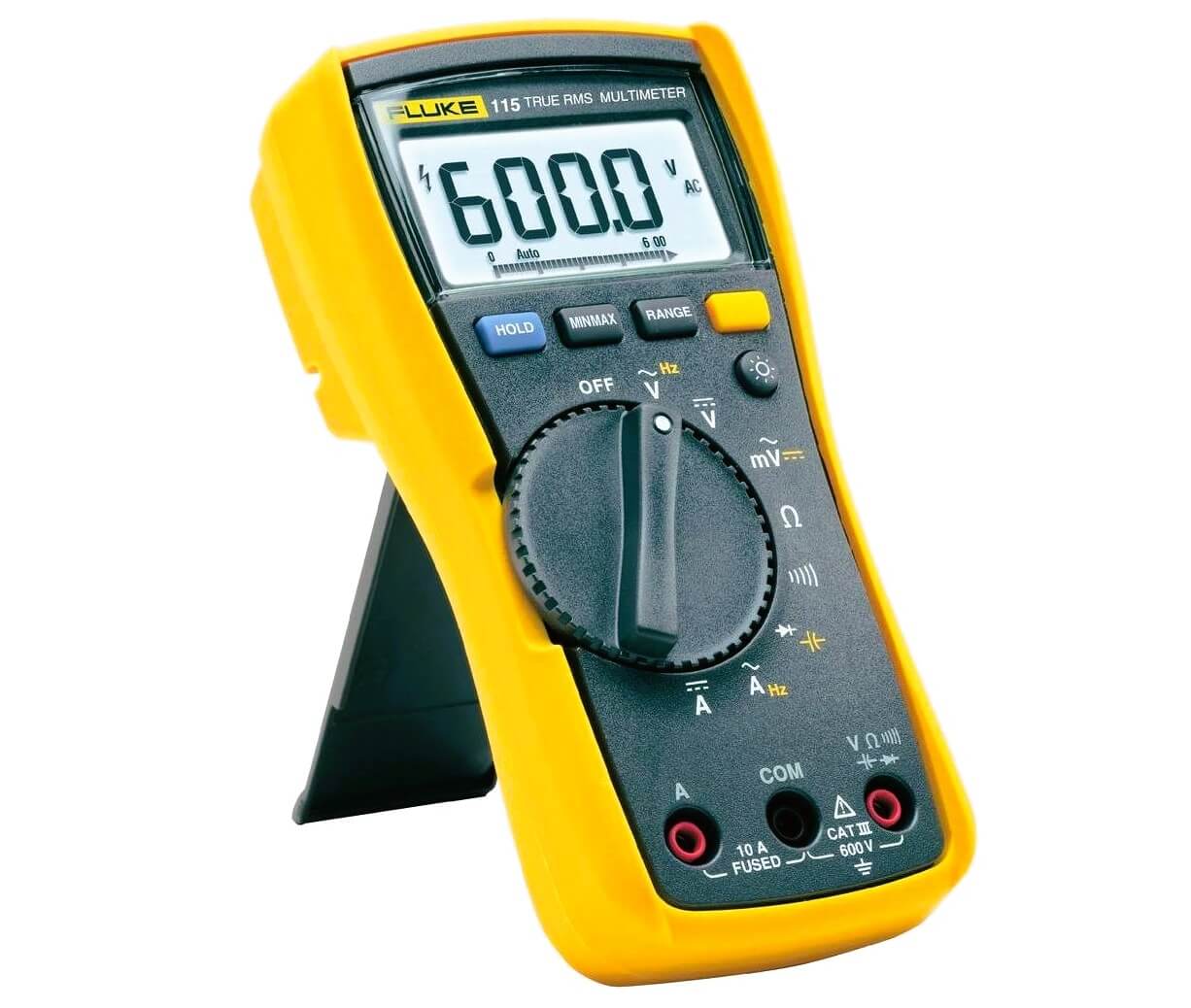
They serve as the conductor from the item being tested to the multimeter. The probe tips on each lead are used for testing circuits.
Wattmeter
The wattmeter is an electric instrument that is used to measure the electric power of various electric circuits (electric active power or the average rate of flow of electrical energy).
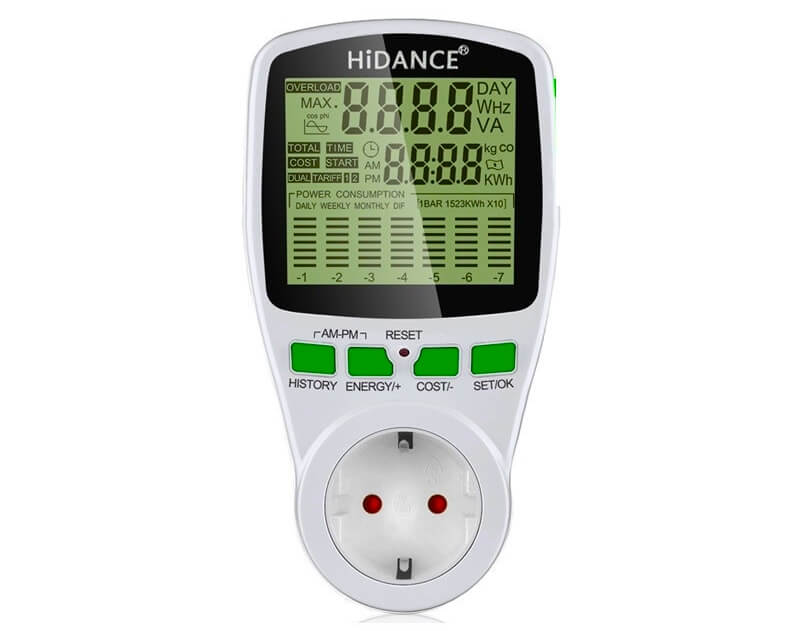
A wattmeter consists of the current coil and voltage coil.
Digital Frequency Meter
A digital frequency meter is an electronic instrument that can measure even the smaller value of frequency up to 3 decimals of a sinusoidal wave and displays it on the counter display.
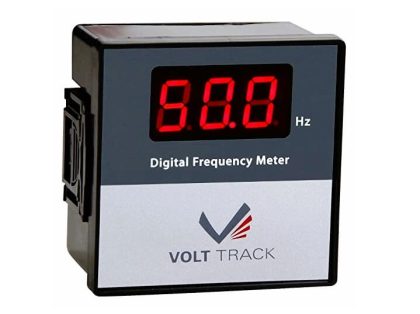
Digital frequency meter counts the frequency periodically and can measure in the range of frequencies between 104 to 109 hertz.
The entire concept is based on the conversion of sinusoidal voltage into continuous pulses (01, 1.0, 10 seconds) along a single direction.
Ohmmeter
The ohmmeter is used to measure the resistance between any two points in an electric circuit. It can also be used to find the value of an unknown resistor.
Digital Capacitance Meter
A capacitance meter is electronic test equipment whose purpose is to measure capacitance, mostly of discrete capacitors.
The capacitance meter works based on the directly proportional relationship between capacitance and a time constant.
Oscilloscope
An oscilloscope is a laboratory instrument commonly used to display and analyze the waveform of electronic signals. It draws a graph of the instantaneous signal voltage as a function of time.
An oscilloscope is a device that allows you to see how voltage changes over time by displaying a waveform of electronic signals.
Logic Level Probe Tester
The logic probe or digital tester is normally a low-cost handheld probe contained within a pen-like tube with indicator lights to show the state of the line being probed.
Typically logic probes are used to test digital circuits like those using TTL or CMOS logic. They often have three indicator lights on the body to indicate the state of the line.
As such logic probes are very basic forms of digital testers, only able to test the state of a single line, but they can be useful in many applications.
Spectrum Analyzer
The spectrum analyzer is used for analyzing waves in the frequency domain. Basically, it displays the energy distribution of a signal on its CRT screen.
Here, the x-axis represents frequency and the y-axis represents the amplitude.
Voltmeter
The voltmeter is a device that measures voltages of either direct or alternating electric current on a scale usually graduated in volts, millivolts (0.001 volts), or kilovolts (1,000 volts).
Many voltmeters are digital, giving readings as numerical displays.
The instruments just described can also provide readings in analog form, by moving a pointer that indicates voltage on a scale, but digital voltmeters generally have a higher order of accuracy than analog instruments.
Continuity Tester
A continuity tester is a simple instrument that checks for a complete path for current to flow (continuity).
The test instrument emits an audible response (beeps) when there is a complete path. Indication of a complete path can be used to determine the condition of a component as open or closed.
Insulation Tester
Insulation testers use a high voltage, low current DC charge to measure the resistance within wires and motor windings to identify current leakage and faulty or damaged insulation, which can lead to arc faults, blown circuits, and risk of electrical shock or fire.
Q meter
The overall efficiency of coils and capacitors intended for RF applications is best evaluated using the Q value. The Q Meter is used to measure some electrical properties of coils and capacitors.
The Q Meter working principle is based on series resonance; the voltage drop across the coil or capacitor is Q times the applied voltage (where Q is the ratio of reactance to resistance, XL/R).
If a fixed voltage is applied to the circuit, a voltmeter across the capacitor can be calibrated to read Q directly.
Dip Meters
A dip meter is a device used to measure the resonant frequency of radio circuits. More specifically, it measures how much absorption is present in a high-frequency circuit coupled with the effects of any nearby magnetic fields.
In this way, we saw some general and typical meters used in troubleshooting electrical and electronic circuits.
